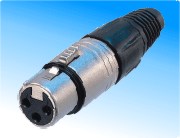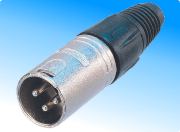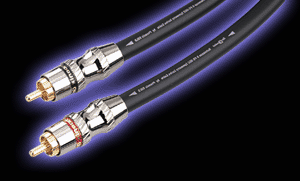

Balanced versus Unbalanced interconnects
Balanced connections entered into the mobile audio scene from the Pro-audio industry. Pro gear such as mixers, microphones, processors, and so on all operate using balanced connections. Your home audio tape deck, CD-player, DVD, VCR and turntable all use an unbalanced connection.
Most balanced connections are made using an XLR style connector.


Unbalanced connections are made using RCA style connectors.

Now let's get into the difference between the technologies. The purpose of either system is to transmit a signal from one point to another. The signal we are transmitting is varying in nature, and as such needs a point of reference. In both systems, the voltages are referenced to ground (0 volts). The physical difference between the two systems is that there is an extra conductor in a balanced system.

Pin 1 is Ground, Pin 2 is Signal +, pin 3 is Signal -

The center pin is the signal + and the chassis is the Ground.
In a standard unbalanced connector, the entire audio signal is carried in the center pin. The shield of the RCA connector provides a reference voltage (0 volts) which serves as a reference for the system. In a balanced configuration, Pin 1 is used as the reference (ground) connection, Pin 2 is the audio signal, and pin 3 is also the audio signal, but inverted about the reference voltage. If pin 3 has 2 volts, pin 3 will have -2 volts, and so on.

This graph shows a sine wave of 1 volt. The blue line represents the signal on Pin 2, and is also the signal that would be carried on the center pin of an unbalanced system. The pink line is the signal that is carried on Pin 3 of a balanced connection. As you can see, it is the complete inversion of Pin 2.

This is the same graph as above, but with noise added to the signal caused by an external source such as an alternator, ignition system or other wiring. As you can see, the noise imposed on the cable is the same in each channel and acts in the same relative direction, either upwards on both conductors, or downwards.
Here is the advantage of the balanced system, any signal that is common to both the positive and negative conductors is rejected. Anything that is different, is considered the signal. So, since the noise on both conductors was added in the same direction on both cables, this will be rejected, and we are left with only the original signal.
How does the signal get inverted for the second conductor? An op-amp inside the device (head unit, equalizer, crossover, etc) simply is wired to invert the signal. A similar op-amp is used to compare the two conductors when the signal arrives into the receiving component.
Now, there are some considerations to make when selecting conductors for use with balanced systems. Many companies are touting the benefits of twisted pair cables. These cables are great for rejecting noise and interference between the two conductors. In a 3-wire system such as this balanced system, the ideal conductor would have pin 1 connected with straight copper, and the conductors for pins 2 and 3 twisted together. This way, any extraneous noise source will act equally on both conductors, and will then be rejected by the common-mode configured op-amp.
Several companies include a similar configuration in their products, but it is called a Differential Input. Precision Power Inc and Audio Control, for example, use an op-amp on the inputs to their products. It works in a similar fashion to a balanced system. Anything that is common to both the center pin and ground shield will be rejected. For this to work perfectly, the use of twisted pair cables is mandatory. In a standard co-axial cable, the center conductor will be influenced much less than the shield conductor, and provide a large difference in noise voltage, which won't be filtered properly.